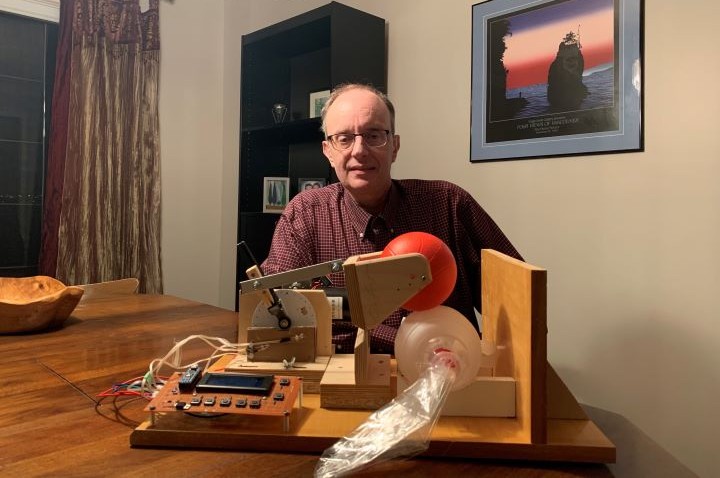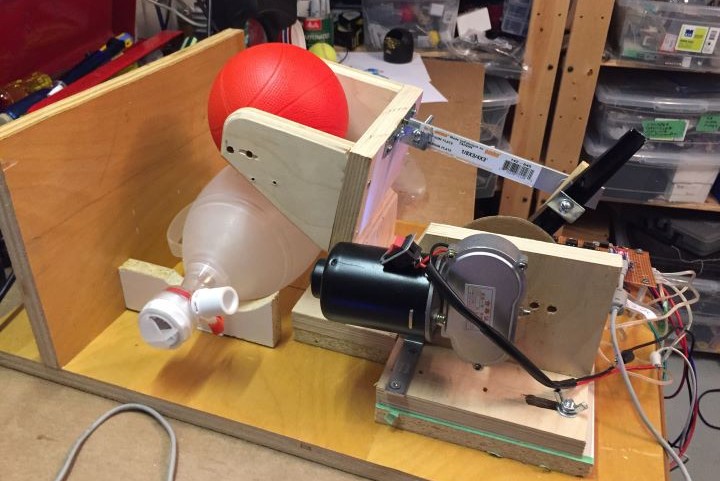As Ontario continues to fight the novel coronavirus pandemic, a Newmarket, Ont., high school teacher has created a homemade ventilator that he made partly using materials he found around the house.

“There were several open-sourced ventilator projects going on around the world, where there are universities or consortiums of scientists trying to develop ventilators quickly to provide for the supply,” Gordon Payne, a computer science subject head and teacher at a Newmarket high school, told Global News.
“I just thought that this would be a nice opportunity for me to just see what kind of a product I could produce with the skills I had and with the materials I had.”
A ventilator is a device used to help people breathe by delivering oxygen to the lungs.
Some people who have severe cases of COVID-19, the disease caused by the novel coronavirus, need to be supported by ventilators. This is because the virus causes a respiratory infection that can make it difficult for people with COVID-19 to breathe.
Payne said he wanted to put an intellectual product — or proof of concept — out into the world so that people can be inspired by the idea and build something they need in the environment that they’re in, rather than rely on a manufacturer to produce something that’s shipped to them.
“It took about nine days of pretty full-time work to get that done,” Payne said of the homemade ventilator.
“The only thing I really spent money on was a windshield wiper motor. I spent like $40 on that, but everything else — all the wood, all the wiring, etc. — were all things I had around the house.”
Payne said he used a manual resuscitator bag, a windshield wiper motor, an Arduino microcontroller and household materials, like plywood, nuts, bolts and screws, to construct the ventilator.
- Enter at your own risk: New home security camera aims paintballs at intruders
- High benzene levels detected near Ontario First Nation for weeks, residents report sickness
- Boston Dynamics unveils ‘creepy’ new fully electric humanoid robot
- Fishing vessel with crane, net arrives in Zeballos for orca calf rescue
“I’m not a doctor or an official engineer, so this is not meant to be used for an actual human being in the way it is — it’s designed as a proof of concept,” Payne said.
The computer science teacher said the project is similar to an early version of a ventilator that didn’t have a lot of features.
He’s also entered the device into a competition, where applicants can enter tools or products that will help to act as solutions in fighting against the COVID-19 pandemic. The challenge is through Hackster and is also sponsored by the United Nations Development Programme.
“I don’t really see this as being something that somebody is on for three to four weeks, trying to recover from COVID, but it might just get them to the next step where they can get to the care that they need,” Payne said.
At the very least, the high school teacher said he wants his students to see that they have the ability to use their own creativity to produce something that can help others.
“I’m trying to inspire my students to look beyond just what they learn and say, ‘Oh, yeah, there is a use for this in the real world.'”

— With files from Global News’ Laura Hensley






Comments